Freezer not freezing food completely? Here’s what you need to know.
When your freezer fails to freeze food adequately, it can be frustrating and lead to spoilage and waste. In this article, we’ll explore the common causes behind a freezer not freezing food sufficiently and provide practical solutions to get it working optimally again.
Whether it’s a faulty thermostat, improper temperature settings, inadequate airflow, or a malfunctioning compressor, we’ll delve into each possibility and offer troubleshooting tips.
By identifying the root cause and following the appropriate steps, you can ensure that your freezer maintains the desired temperature and keeps your food properly frozen. Prevent food spoilage and save money by addressing the issue promptly.
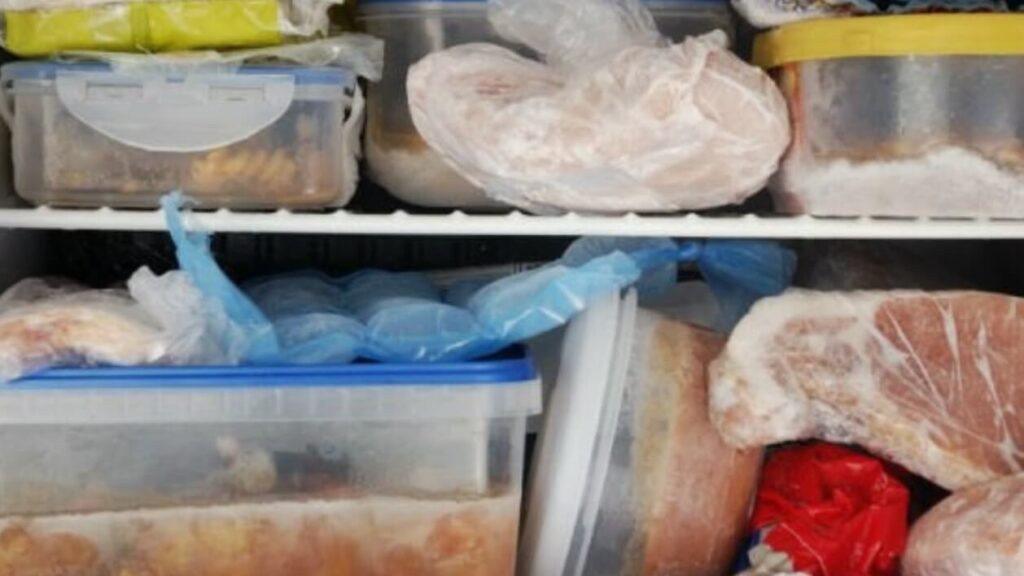
Common Causes Of Inadequate Freezing
Is your freezer not freezing your food completely? This can be quite frustrating, especially when you’re counting on your freezer to preserve your food. There are several common causes for inadequate freezing that you should be aware of. Let’s take a closer look at each of them:
Insufficient Cooling Temperature:
- The temperature of your freezer plays a vital role in freezing your food properly. If the cooling temperature is not set correctly, it can result in inadequate freezing.
- Check the temperature setting of your freezer and ensure that it is set to the recommended level for freezing food.
- Keep in mind that opening the freezer frequently can also cause temperature fluctuations, affecting the freezing process.
Overcrowded Freezer Compartment:
- It’s important to avoid overloading your freezer with too much food. An overcrowded freezer compartment can restrict the airflow, leading to poor freezing.
- Make sure there is enough space for the air to circulate within the freezer. Consider removing any unnecessary items or organizing the contents to maximize airflow.
Damaged Or Worn-Out Door Seals:
- The door seals are crucial for maintaining the proper temperature inside your freezer. Damaged or worn-out seals can result in cold air leakage, causing inadequate freezing.
- Inspect the door seals and look for any signs of damage or wear. If you notice any issues, consider replacing them to ensure a tight seal.
Remember, a freezer that is not freezing food completely can be caused by various factors. By addressing these common causes, you can improve the performance of your freezer and ensure that your food remains properly frozen.
Adjusting The Freezer Temperature
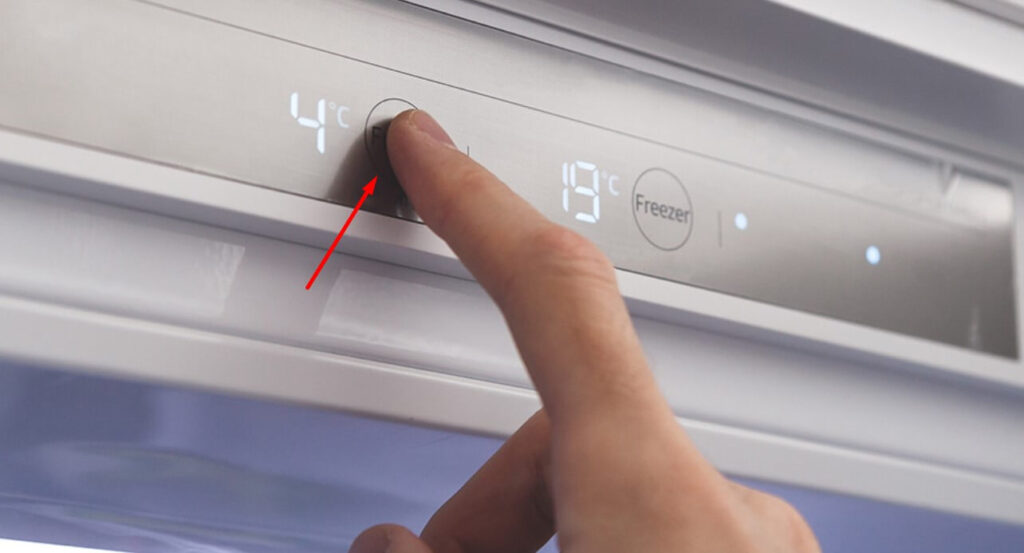
Is your freezer not freezing food completely? It can be frustrating to open your freezer and find partially frozen items or, worse, completely thawed food. The freezer temperature plays a crucial role in ensuring your food stays frozen and fresh.
In this section, we will discuss how to adjust the freezer temperature to maintain optimal conditions for freezing your food.
Identifying The Optimal Temperature Range
Maintaining the correct temperature in your freezer is vital to keep your food safe from spoilage. The optimal temperature range for freezers is typically between -18 to -20 degrees Celsius (0 to -4 degrees Fahrenheit).
Within this range, your freezer should be able to freeze food properly and prevent bacterial growth.
Here are some key points to remember when identifying the optimal temperature range:
- Aim to set your freezer temperature at -18 degrees Celsius (0 degrees Fahrenheit) or colder.
- Use a freezer thermometer to accurately measure the temperature inside your freezer.
- Avoid setting the temperature too high, as this can result in insufficient freezing of your food.
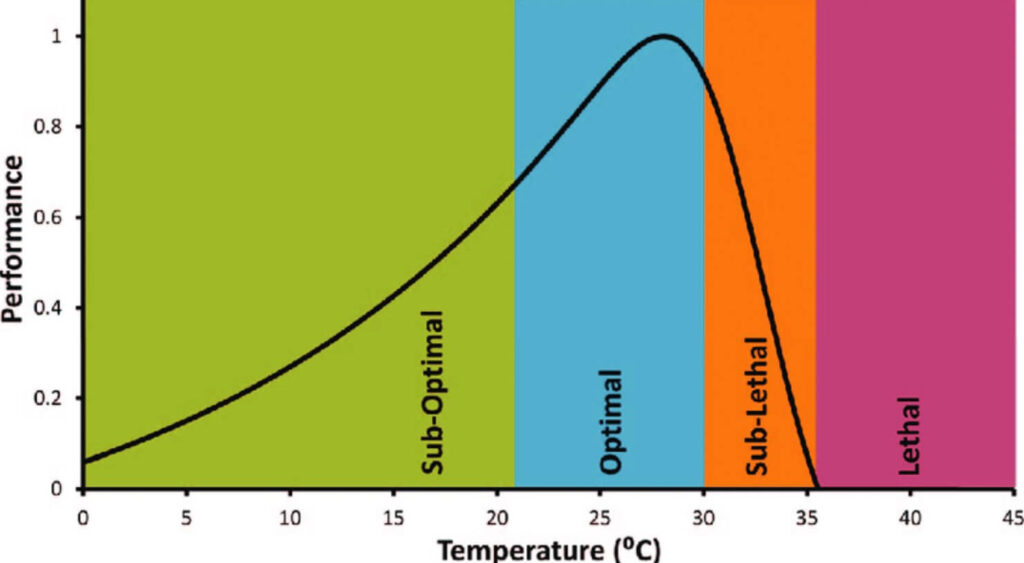
Credit: researchgate.net
Steps To Adjust Freezer Temperature
If you find that your freezer is not reaching the optimal temperature range, here are some steps you can take to adjust and regulate the temperature effectively:
- Locate the temperature control dial or settings on your freezer. It is usually located inside the freezer compartment or on the exterior panel.
- Consult your freezer’s user manual for specific instructions on adjusting the temperature. Different freezer models may vary in terms of temperature control mechanisms.
- Gradually adjust the temperature setting in small increments, allowing the freezer to stabilize for several hours before making further adjustments.
- Monitor the temperature changes using a freezer thermometer.
- Repeat the adjustment process until you have achieved the desired temperature.
Monitoring Temperature Changes
Once you have adjusted the freezer temperature, it’s important to monitor the temperature changes regularly to ensure that your freezer is maintaining the optimal conditions. Here are some tips for monitoring the temperature changes:
- Use a digital freezer thermometer for accurate temperature readings.
- Place the thermometer in the middle of the freezer, away from the walls and door.
- Check the temperature readings daily or at least once a week.
- If you notice any significant fluctuation in temperature or the freezer not reaching the desired range, consult the user manual or contact a professional for assistance.
By identifying the optimal temperature range, adjusting the freezer temperature correctly, and monitoring temperature changes, you can ensure that your freezer is freezing food completely and maintaining the freshness of your stored items. Remember, a well-functioning freezer is essential for preserving the quality and safety of your frozen foods.
Organizing And Improving Air Circulation
If your freezer is not fully freezing your food, then there could be several reasons behind it. One common issue is the lack of proper air circulation within the freezer. When air cannot flow freely, it can prevent your food from freezing completely.
In this section, we will explore some strategies to improve air circulation within your freezer and ensure that your food is freezing as it should.
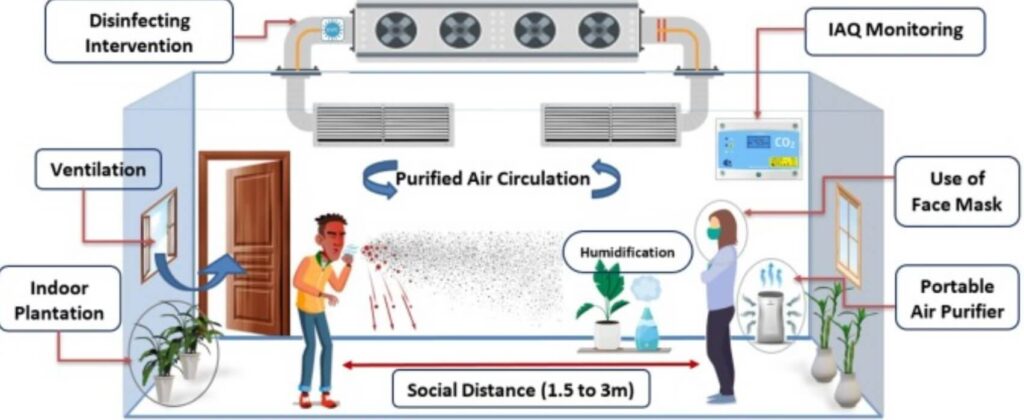
Credit: sciencedirect.com
Proper Placement Of Food Items
- Avoid overcrowding the freezer with food items. This can restrict air movement and prevent proper cooling.
- Leave enough space between the food items to allow for air circulation.
- Place taller items and containers towards the back of the freezer to prevent blocking the air vents.
Creating Space For Air Circulation
- Keep the freezer organized and free from clutter. A clean and well-arranged freezer allows for better airflow.
- Avoid placing items directly against the walls of the freezer. Leave some space to allow air to circulate around the food.
- If necessary, remove any unnecessary items or expired food to create more space for proper airflow.
Using Containers And Dividers To Organize
- Consider using containers or dividers to separate different types of food. This can help maintain better airflow and prevent items from blocking the cold air vents.
- Utilize stackable containers or bins to maximize space and make it easier to access items.
- Label and date containers to keep track of the contents and avoid any forgotten items.
By following these tips for organizing and improving air circulation in your freezer, you can optimize its performance and ensure that your food freezes completely. Remember, proper placement of food items, creating space for air circulation, and using containers and dividers are key to maintaining an efficient freezer.
Inspecting And Replacing Door Seals
Is your freezer not maintaining the optimal temperature, resulting in food not freezing completely? One possible culprit could be damaged door seals. The door seals, also known as gaskets, create an airtight seal that prevents warm air from entering the freezer and causing ice buildup.
Over time, these seals can wear out or become damaged, compromising their effectiveness. In this section, we will explore how to identify signs of damaged seals, clean and maintain door seals, and replace worn-out seals to ensure optimal performance.
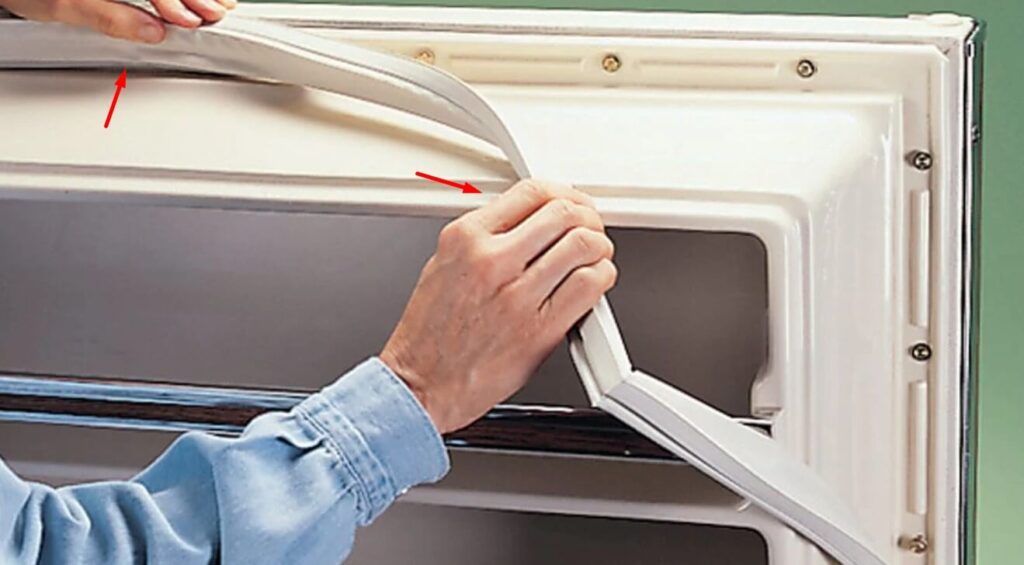
Identifying Signs Of Damaged Seals
To determine if your freezer’s door seals are the cause of the inadequate freezing, watch out for the following signs:
- Visible wear and tear on the seals, such as cracks, splits, or loose sections.
- A noticeable gap between the door and the freezer cabinet when closed.
- Frost or ice buildup around the freezer door.
- Difficulty in closing the freezer door securely.
- An increase in the amount of time it takes for the freezer to reach the desired temperature.
Cleaning And Maintaining Door Seals
Proper cleaning and maintenance of the door seals can extend their lifespan and improve their effectiveness. Here’s what you can do:
- Regularly wipe down the door seals using a mild detergent and warm water solution. Avoid using harsh chemicals that could damage the seals.
- Remove any debris or food particles that might be stuck in the seals, as they can prevent the door from sealing tightly.
- Inspect the seals for any signs of mold or mildew growth. If detected, clean the affected areas using a mixture of vinegar and water.
- Ensure that the seals are completely dry before closing the freezer door.
Replacing Worn-Out Seals For Optimal Performance
If you have identified that the door seals are damaged beyond repair, it’s time to replace them. Follow these steps for a successful replacement:
- Contact the freezer manufacturer to inquire about the right replacement seals for your model.
- Before installing the new seals, ensure that they are at room temperature.
- Carefully remove the old seals by gently pulling them away from the freezer door.
- Align the new seals with the door and firmly press them into place, ensuring a secure fit.
- Close the freezer door and check for any gaps or leaks. Adjust the seals if necessary.
- Test the freezer to ensure that the new seals are functioning properly and that food is freezing completely.
By inspecting and replacing damaged door seals, you can restore your freezer’s ability to freeze food effectively. Remember to clean and maintain the seals regularly to prevent premature wear and ensure optimal performance.
Reducing Freezer Overload
If you find that your freezer is not quite getting the job done when it comes to keeping your food completely frozen, you may be dealing with a case of freezer overload. Overstuffing your freezer can hinder its ability to maintain a consistently low temperature, resulting in food that is not properly frozen.
The good news is that there are a few simple steps you can take to reduce freezer overload and ensure your food stays frozen as it should. Keep reading to learn more.
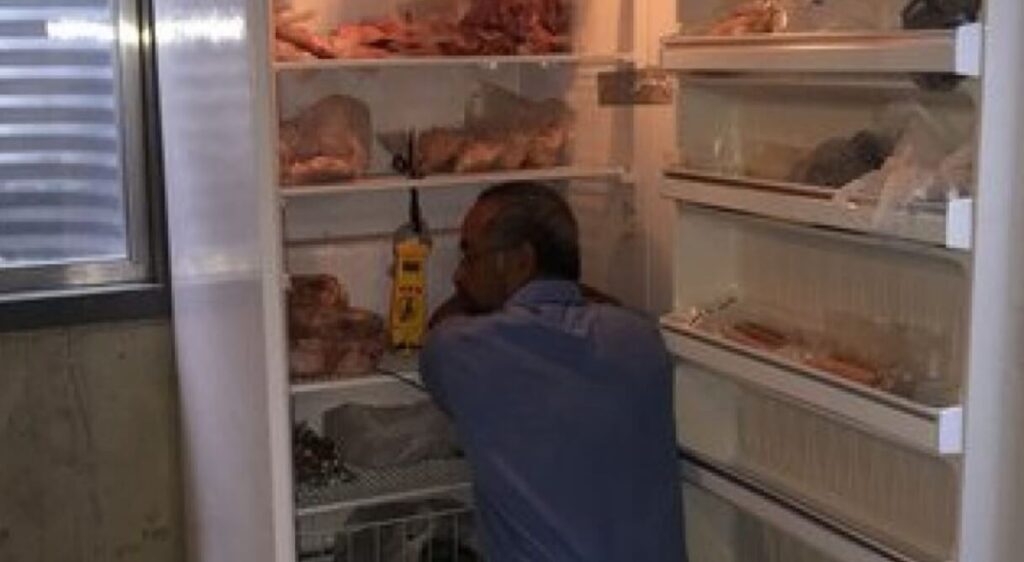
Decluttering And Removing Unnecessary Items
- Clear out any expired, old, or freezer-burned items regularly. This will not only create space but also help in maintaining a proper airflow.
- Check for any items that can be discarded or given away if they are no longer needed or if they have been sitting in the freezer for an extended period.
- Organize the freezer by grouping similar items together and using storage containers or freezer bags to maximize space.
- A decluttered freezer will not only help with proper airflow but also make it easier for you to see what you have, reducing the chances of buying duplicate items.
Rotating Food Items Regularly To Prevent Overload
- Practice a first-in, first-out approach to ensure that the oldest items are used first. This will help reduce the chances of forgotten items piling up and taking up unnecessary freezer space.
- Rotate items by moving older items to the front and placing new items towards the back. Be sure to label containers with dates to keep track of their freshness.
- By rotating your food regularly, you are not only creating additional space but also ensuring that items are used before they have the chance to become freezer-burned or expire.
Implementing these strategies will not only help reduce freezer overload but also ensure that your frozen food remains at its best quality. By decluttering and removing unnecessary items, as well as rotating food items regularly, you can optimize the functionality of your freezer and enjoy frozen meals that are properly frozen and preserved.
Checking And Maintaining The Condenser Coils
One of the most common issues that can cause a freezer to not freeze food completely is dirty or clogged condenser coils. The condenser coils play a crucial role in the cooling process, as they remove heat from the freezer’s interior and release it into the surrounding environment.
Over time, these coils can accumulate dust, dirt, and debris, which hinders their ability to effectively cool the freezer. Therefore, it is important to regularly check and maintain the condenser coils to ensure optimal performance.
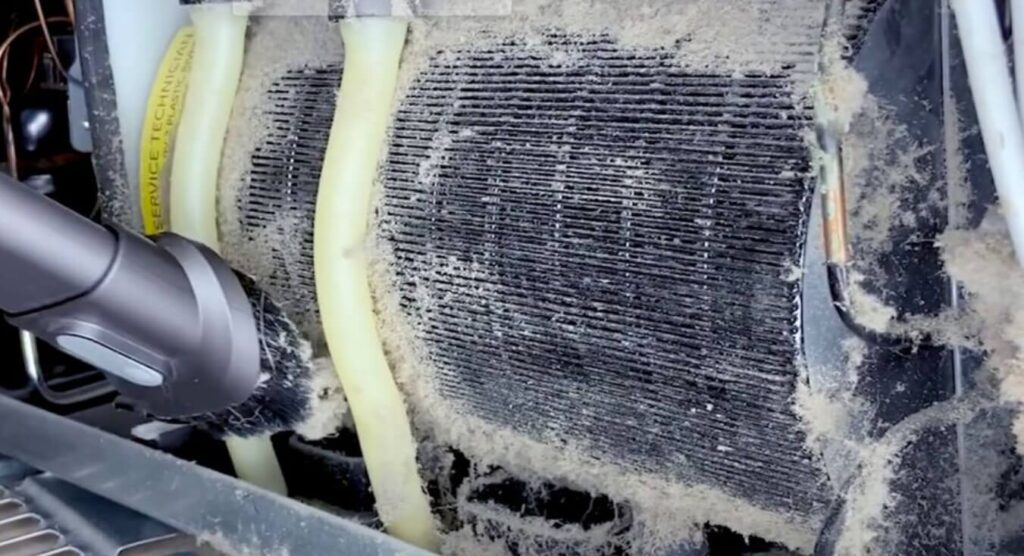
Importance Of Clean Condenser Coils
- Clean condenser coils enhance cooling efficiency: When the condenser coils are clean, they can effectively remove heat from the freezer, allowing it to cool down to the desired temperature. This results in better freezing of food and prevents spoilage.
- Prevents overheating of the compressor: Dirty coils make the compressor work harder to cool the freezer, leading to increased energy consumption and potential overheating. Keeping the condenser coils clean helps in maintaining the compressor’s longevity and preventing costly repairs.
Cleaning Methods And Frequency
- Vacuuming: Use a brush attachment on your vacuum cleaner to gently remove dust and dirt from the condenser coils. Be careful not to damage the coils or any surrounding components. Repeat this process every three to six months, depending on the amount of dirt buildup.
- Brushing: If the coils are heavily soiled, you can use a soft brush to carefully remove the debris. Make sure to disconnect the freezer from the power source before attempting this cleaning method. Aim for a thorough cleaning at least once a year.
- Compressed air: For stubborn dirt or debris stuck between the coils, compressed air can be an effective cleaning method. Use a can of compressed air to blow away the particles. Remember to wear protective goggles and follow the manufacturer’s instructions for safe use.
Scheduling Professional Maintenance As Needed
- When to seek professional help: If you notice that your freezer is not freezing food completely even after cleaning the condenser coils, it might be time to call a professional technician. They have the expertise and specialized equipment to diagnose any underlying issues and perform thorough maintenance.
- Regular professional maintenance: It is recommended to schedule professional maintenance for your freezer at least once a year. During this visit, the technician will inspect and clean the condenser coils, ensuring the freezer’s optimal performance and longevity.
Taking care of your freezer’s condenser coils is essential for maintaining its efficiency and ensuring that your food remains properly frozen. By routinely cleaning the coils and seeking professional maintenance as needed, you can prevent issues with incomplete freezing and prolong the lifespan of your freezer.
So, don’t neglect this crucial task and enjoy the benefits of a well-functioning freezer!
Identifying And Resolving Food Packaging Issues
Is your freezer not freezing food completely? Nothing is more frustrating than finding your frozen goods partially thawed or covered in ice crystals. Inefficient freezing may be due to various factors, including food packaging issues. Proper packaging plays a crucial role in preventing freezer burn and ensuring optimal preservation of your frozen goods.
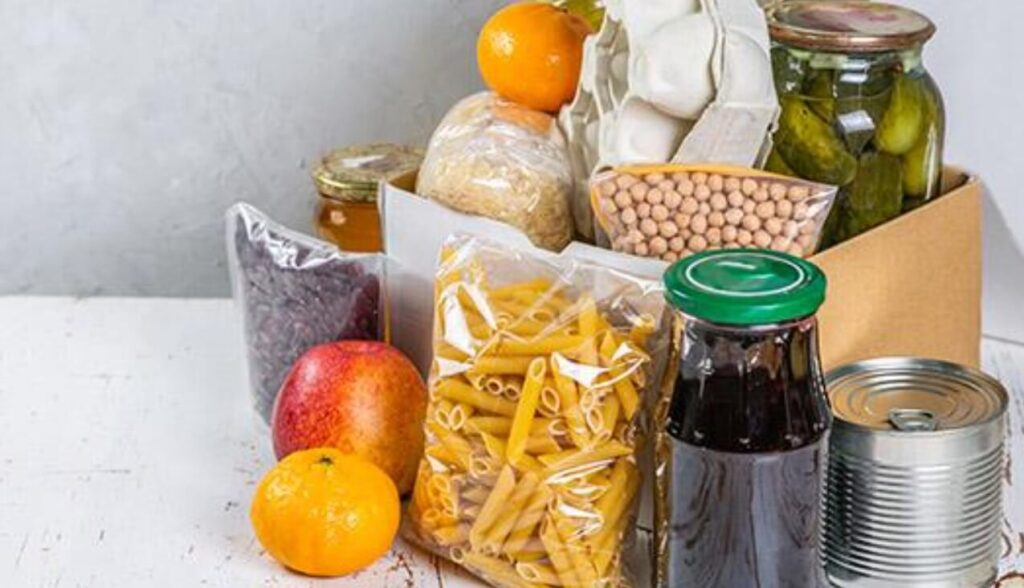
By identifying and resolving packaging problems, you can improve the quality and longevity of your frozen foods. Let’s explore some key points to keep in mind when it comes to food packaging in the freezer:
Proper Packaging To Prevent Freezer Burn
- Use moisture-resistant packaging: Opt for packaging materials that are specifically designed for freezing, such as freezer-safe bags or containers. These materials help to create a barrier against moisture, preventing freezer burn.
- Remove excess air: Ensure there is minimal air inside the packaging to prevent freezer burn. Squeeze out any excess air before sealing the bags or containers.
- Double or triple wrap: For particularly delicate or long-term storage, consider using multiple layers of packaging to provide extra protection against freezer burn.
Checking For Damaged Or Inadequate Packaging
- Inspect for tears or holes: Before placing items in the freezer, carefully examine the packaging for any damage. Even small tears can lead to freezer burn and compromise the quality of the food.
- Ensure proper seal: Make sure that bags are tightly sealed, and containers are properly closed. Loose seals can allow air to enter, leading to freezer burn.
- Evaluate packaging suitability: Some packaging materials may not be suitable for freezing. Ensure that the packaging you are using is appropriate for freezing to avoid food spoilage.
Re-Packaging And Resealing For Optimal Preservation
- Transfer to suitable packaging: If you notice any damaged or inadequate packaging, it is essential to transfer the food to a more appropriate container or bag. This will help to prevent freezer burn and maintain the quality of the food.
- Remove damaged parts: If part of the food has already been affected by freezer burn, carefully remove those portions before re-packaging the remaining food.
- Label and date: To keep track of the contents and ensure proper rotation, label all packages with the food item and date of freezing.
By understanding and addressing food packaging issues, you can improve the freezing process and maintain the quality and taste of your frozen goods. Remember to use proper packaging materials, check for any damage, and re-package items as needed. With these steps, you can minimize freezer burn and preserve your frozen foods for longer periods.
Troubleshooting Mechanical Malfunctions
Is your freezer failing to freeze your food completely? You may be experiencing a mechanical malfunction. Don’t worry, though – there are several troubleshooting steps you can take to identify and resolve the issue.
In this section, we will guide you through checking for power supply issues, assessing the functionality of the defrost timer, and examining the thermostat and temperature control settings.
Checking For Power Supply Issues
- Ensure that the freezer is properly plugged in and that the power cord is not damaged.
- Check if there is power supply in the outlet by plugging in another appliance.
- Consider testing the outlet with a voltage tester to confirm if it’s functioning correctly.
- If the outlet is working, but the freezer still doesn’t receive power, it could be a problem with the internal wiring or the power switch.
Assessing The Functionality Of The Defrost Timer
- Locate the defrost timer in your freezer, typically found near the compressor or behind the control panel.
- Depending on the model, the timer can be manual or digital. Refer to the user manual for specific instructions.
- Turn the timer manually to trigger the defrost cycle and observe if it initiates properly.
- If the defrost cycle doesn’t start, the defrost timer may need to be replaced.
Examining The Thermostat And Temperature Control Settings
- Check if the thermostat is set to the correct temperature setting for freezing food.
- Verify that the temperature control knob or buttons are functioning properly.
- Consider adjusting the temperature setting slightly lower and give the freezer some time to reach the desired temperature.
- If the freezer fails to cool down after adjusting the temperature, the thermostat or temperature control may need to be repaired or replaced.
Remember, mechanical malfunctions can be tricky to diagnose, but by following these troubleshooting steps, you’re well on your way to resolving the issue. If you’re uncertain or unable to fix the problem on your own, it’s best to consult a professional appliance technician.
Seeking Professional Assistance
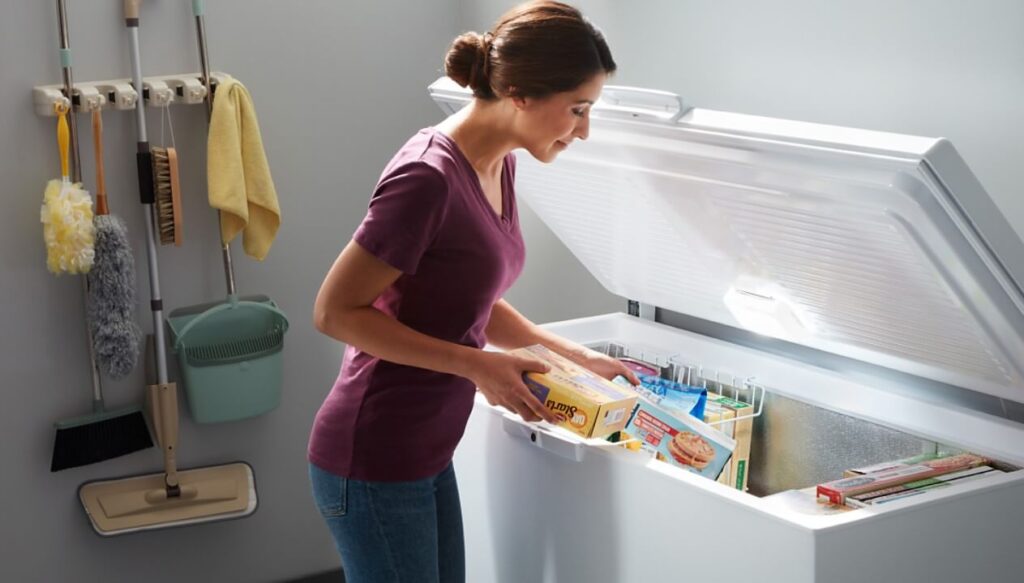
Is your freezer not properly freezing your food, leaving you with spoiled groceries? While it can be frustrating, it may be time to consider seeking professional assistance. Here are a few key points to keep in mind when deciding whether to call in the experts:
When To Consider Professional Help
- If your freezer is not freezing food completely, even after several attempts to fix it, it may require the expertise of a professional appliance repair service.
- If you notice any unusual noises coming from your freezer, such as buzzing or clicking, it could be a sign of a more significant issue that needs professional attention.
- Frequent and recurring issues with your freezer not reaching the desired temperature may indicate a deeper problem that requires professional troubleshooting.
Finding A Reliable Appliance Repair Service
- Ask for recommendations from friends, family, or neighbors who have had positive experiences with appliance repair services in the past.
- Research online reviews and ratings of local appliance repair companies to ensure you choose a reputable and reliable service provider.
- Check if the repair service has the necessary expertise in fixing freezer-related issues, as some companies may specialize in specific appliance repairs.
Preparing For A Service Call And Understanding Costs
- Prior to the service call, clean out your freezer and remove any perishable items to prevent any spoilage during the repair process.
- Make sure to have the freezer model and brand information readily available to provide to the repair technician.
- Ask the appliance repair service about their pricing structure, including any diagnostic fees or parts costs that may apply. It is essential to have a clear understanding of the expected costs before the repair work begins.
Remember, it’s crucial to address freezer issues promptly to prevent further damage and food spoilage. Seeking the assistance of a professional appliance repair service will help diagnose the root cause of the problem and ensure that your freezer is working correctly once again.
Frequently Asked Questions On Freezer Not Freezing Food Completely
Why Is My Freezer Not Freezing Food Completely?
There are several possible reasons why your freezer may not be freezing food completely. It could be due to a faulty thermostat, inadequate airflow, or a malfunctioning compressor. Additionally, if your freezer is too full or has a poor seal, it may not be able to maintain the necessary temperature for freezing.
Checking and addressing these issues should help resolve the problem.
How Can I Fix A Freezer That Is Not Freezing Food Completely?
To fix a freezer that is not freezing food completely, start by checking the thermostat settings to ensure they are set at the recommended temperature. Make sure the freezer has adequate airflow by clearing any obstructions around the vents. If the problem persists, check the door seal for any gaps or damage, as this can cause temperature fluctuations.
Additionally, if the freezer is overfilled, remove excess items to allow for proper circulation.
Can A Dirty Condenser Cause My Freezer To Not Freeze Food Completely?
Yes, a dirty condenser can affect the performance of your freezer and prevent it from freezing food completely. A dirty condenser can restrict airflow, causing the compressor to work harder and potentially overheat. Regularly cleaning the condenser coils can help prevent this issue and ensure efficient cooling.
What Should I Do If My Freezer Stops Freezing Food Completely?
If your freezer stops freezing food completely, start by checking the power supply and making sure it is properly connected. Ensure that the thermostat is set at the correct temperature and that the freezer is not overfilled. Check for any signs of a malfunctioning compressor or a defective thermostat.
If none of these solutions work, it may be necessary to call a professional for further inspection and repair.
Can The Location Of My Freezer Affect Its Ability To Freeze Food Completely?
Yes, the location of your freezer can impact its ability to freeze food completely. Placing the freezer near a heat source like a stove or direct sunlight can cause it to work harder and struggle to maintain the necessary temperature.
Choose a location away from heat sources and ensure that there is enough space around the freezer for proper ventilation.
Conclusion
To conclude, a freezer that is not freezing food completely can be a frustrating issue for anyone. However, by following the troubleshooting steps mentioned in this blog post, you can easily identify and fix the problem. Start by checking the temperature settings and ensuring they are properly adjusted.
Next, inspect the freezer door seal for any damage or gaps that may be causing air leakage. Additionally, organizing your freezer and allowing enough space for air circulation can contribute to better freezing efficiency. Regularly cleaning the freezer and defrosting it will also help maintain its functionality.
If all else fails, it may be time to consult a professional technician who can diagnose and repair any underlying mechanical or electrical issues. By taking these steps, you can ensure that your freezer remains in optimal condition, preserving the freshness and quality of your food for longer periods of time.
